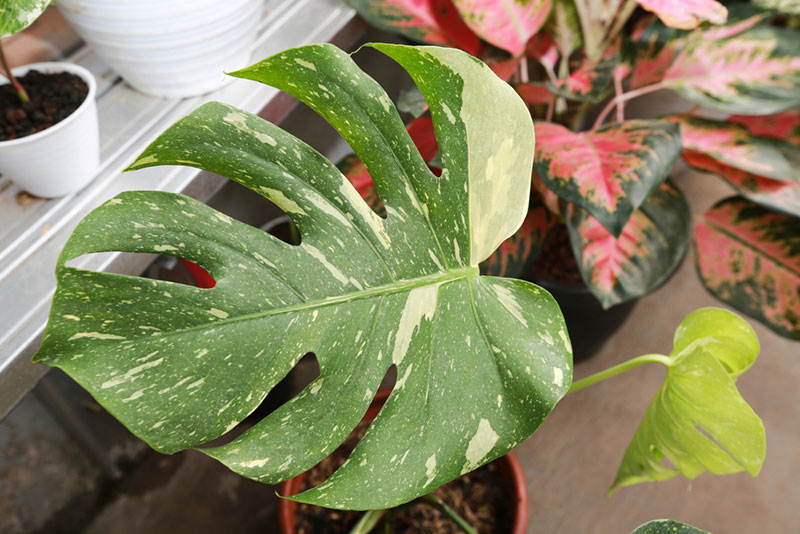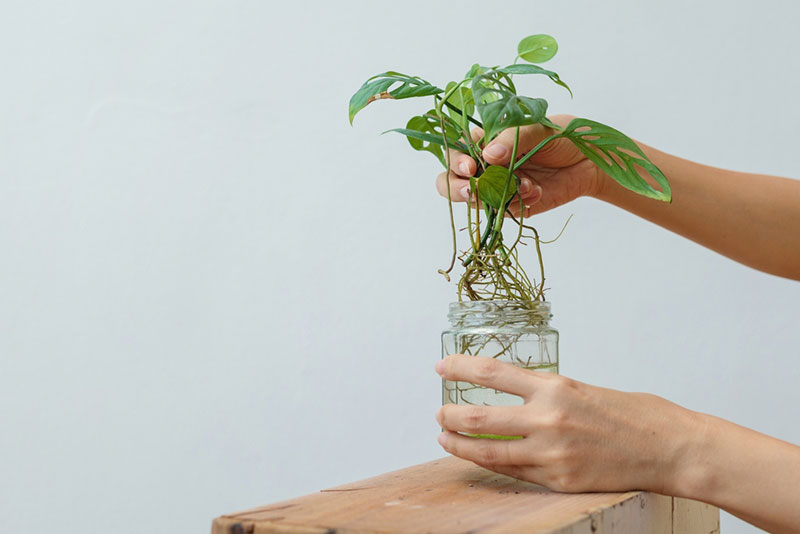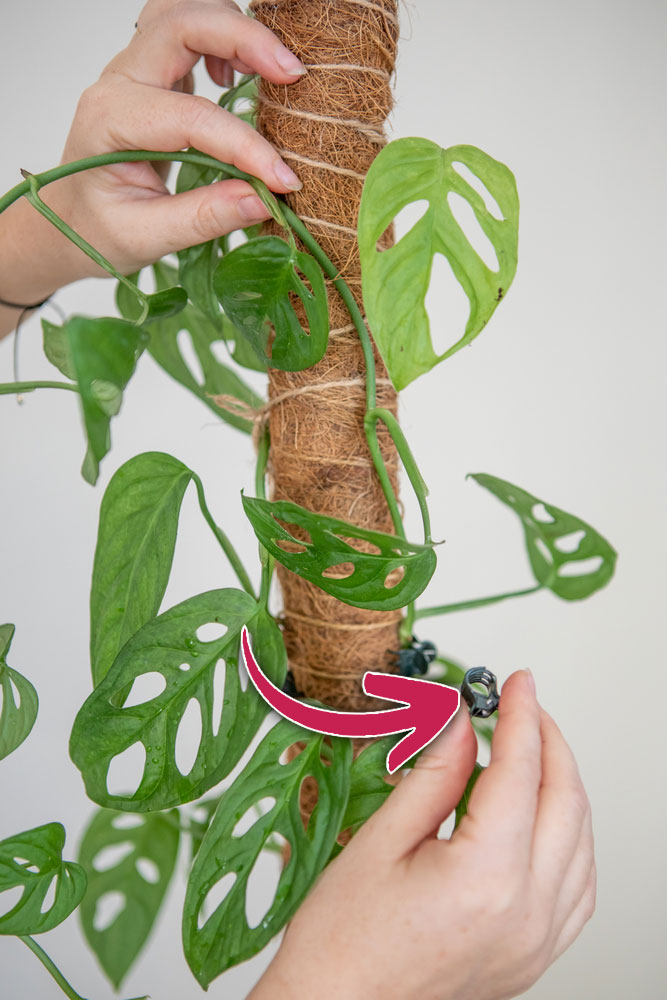
The split-leaf philodendron (Monstera deliciosa), often just referred to as monstera, is a terrific houseplant to grow if you’re just getting into container gardening. As one plant grows bigger, you’ll want to take cuttings to form new plants. Monstera’s large leaves and clean stalks make this a relatively easy task.
Propagating Monstera in Water
If you’re not thrilled about the mess that soil can make, you can propagate monstera in water, eventually transferring it to a pot with soil. The best time to do this is in spring or summer:
Step 1
Have everything ready. As basic as this sounds, it’s easy to forget something that you need right as you’re cutting into the plant. Gather your shears or scissors, isopropyl alcohol, a clean cloth or paper towel, an empty container that is clean, and distilled water. You can buy distilled water at grocery stores and big box stores.
Step 2
Dampen the cloth or paper towel with isopropyl alcohol. This is the cleaning and sanitizing alcohol you buy at drugstores, also sometimes called rubbing alcohol. Wipe the pruning shears or scissors and the interior of the container with the cloth or towel. Ensure you clean all corners and parts.
Step 3
Choose the specific stems you want to remove from the main plant, and look for a node and a leaf on each. The node is the place where new stems emerge and grow. You absolutely need a node. Any monstera stem you cut off that doesn’t have a node will not root because it won’t have the cellular material that forms new roots. You’ll also need at least one leaf because the leaf is what will conduct photosynthesis, turning sunlight into food for the new plant.
Step 4
Cut the stem at a point close to but under the node, by maybe about a quarter of an inch. Don’t cut into the node, and don’t worry if the distance isn’t exactly a quarter of an inch; you can take a bit more of the stem. Try not to cut more than a half an inch below the node.
Step 5
Drop the stem, node side first, of course, into the container.
Step 6
Fill the container with distilled water. Fill it to about three-quarters of the way full.
Step 7
Repeat all the steps with additional stems you want to cut off. Technically you can place more than one stem in a big container, but if you intend to plant these stems in soil after they’ve rooted, keeping the stems in separate containers is best. Otherwise, you risk the roots becoming tangled up with each other, making it difficult to separate the cuttings when you want to plant them in soil.
Step 8
Place each container in a spot that gets either dappled sun or partial sun, such as morning sun and afternoon shade.
Step 9
Rinse off the cuttings and roots occasionally and fill the container with fresh, distilled water as needed.

Frequently Asked Questions
1. How long does it take for Monstera plant cuttings to root in water?
If you’re providing partial sun and have the cuttings at room temperature, you’re looking at about two to four weeks for most cuttings to develop roots. It can take a little longer, so don’t worry if week 5 arrives and you’re still waiting. Past that, though, you’ll need to re-evaluate the care you’re giving the plants. Ensure the plants aren’t in direct, hot sun and that the humidity levels aren’t too dry.
2. When should you plant Monstera in soil?
Let the stems and roots grow in water for a couple of months and then start looking at the roots. When a cutting has thick, strong roots that don’t look withered, and the roots seem to be in proportion to the stem and its leaves, then you can try moving it to soil. Note that this type of transplanting can shock the plant, so give it very good care. Ensure the soil is nutritious and that the pot you use is big enough to let the roots grow for a while without becoming root-bound.
3. Is it better to propagate Monstera in water or soil?
Either method is good. If you want to avoid using soil for as long as you can, water is obviously the best choice. Water also allows you to track the progress of the roots if you use clear containers, and you can easily see if the roots are developing well or starting to rot. Soil is better if you want a one-and-done type of rooting because transplanting a wad of soil is easier than trying to coax a water-rooted plant to start living in soil.
4. Where should I cut Monstera for water propagation?
Again, cut just under a node on the stem. Nodes look like bumps, and you may see another stem emerging from the node already. Aim to cut no more than a half an inch below the node.
6. Can Monstera live in water forever?
Yes, it can! It’s not going to turn into the lush houseplant you’re used to seeing, but the stem and leaves will live for a few years in just water.
7. Is Monstera toxic to animals?
Monstera is considered mostly toxic. Do not let animals or kids chew on the plant. While some monstera varieties are often cultivated commercially for an edible fruit stalk, assume your houseplant is not of an edible variety.





